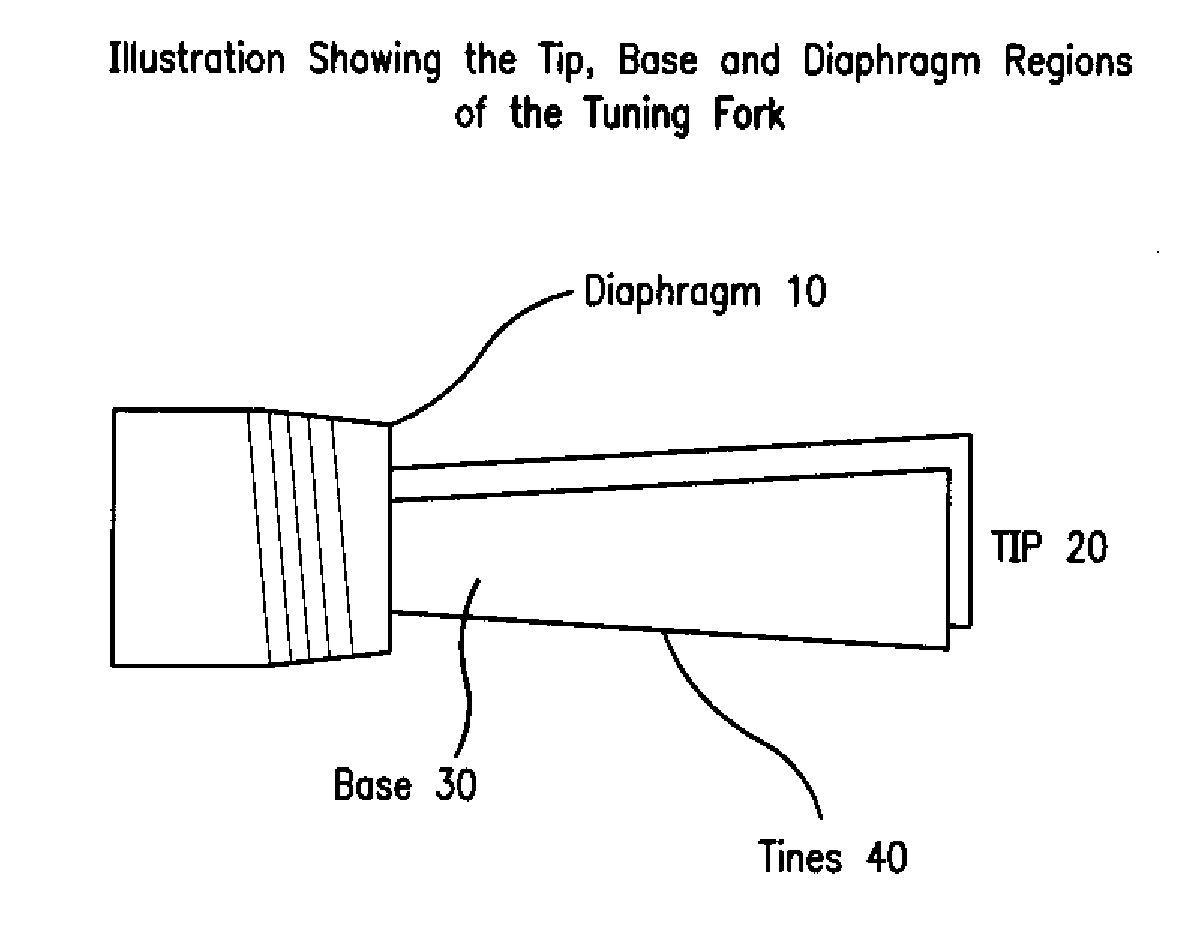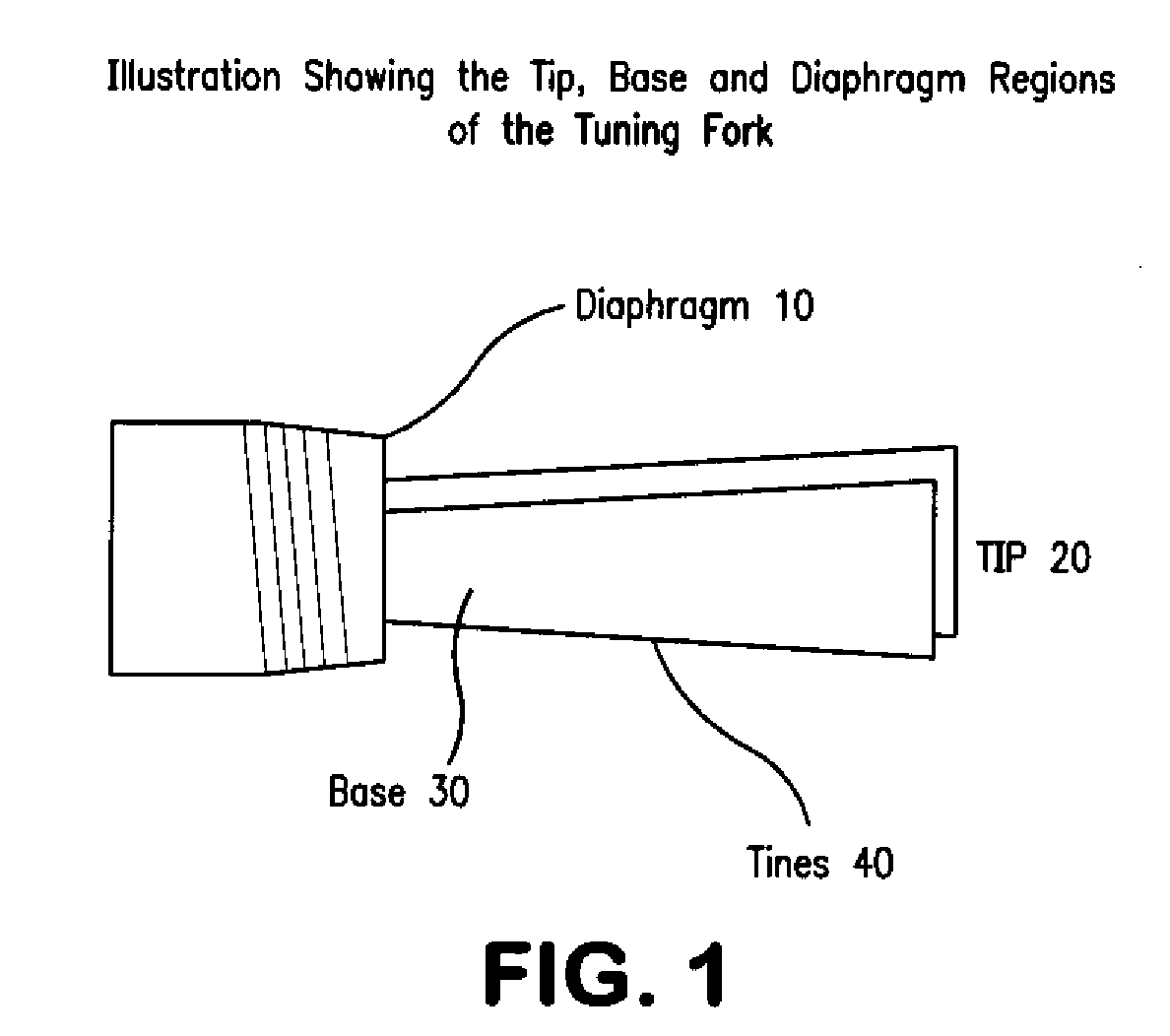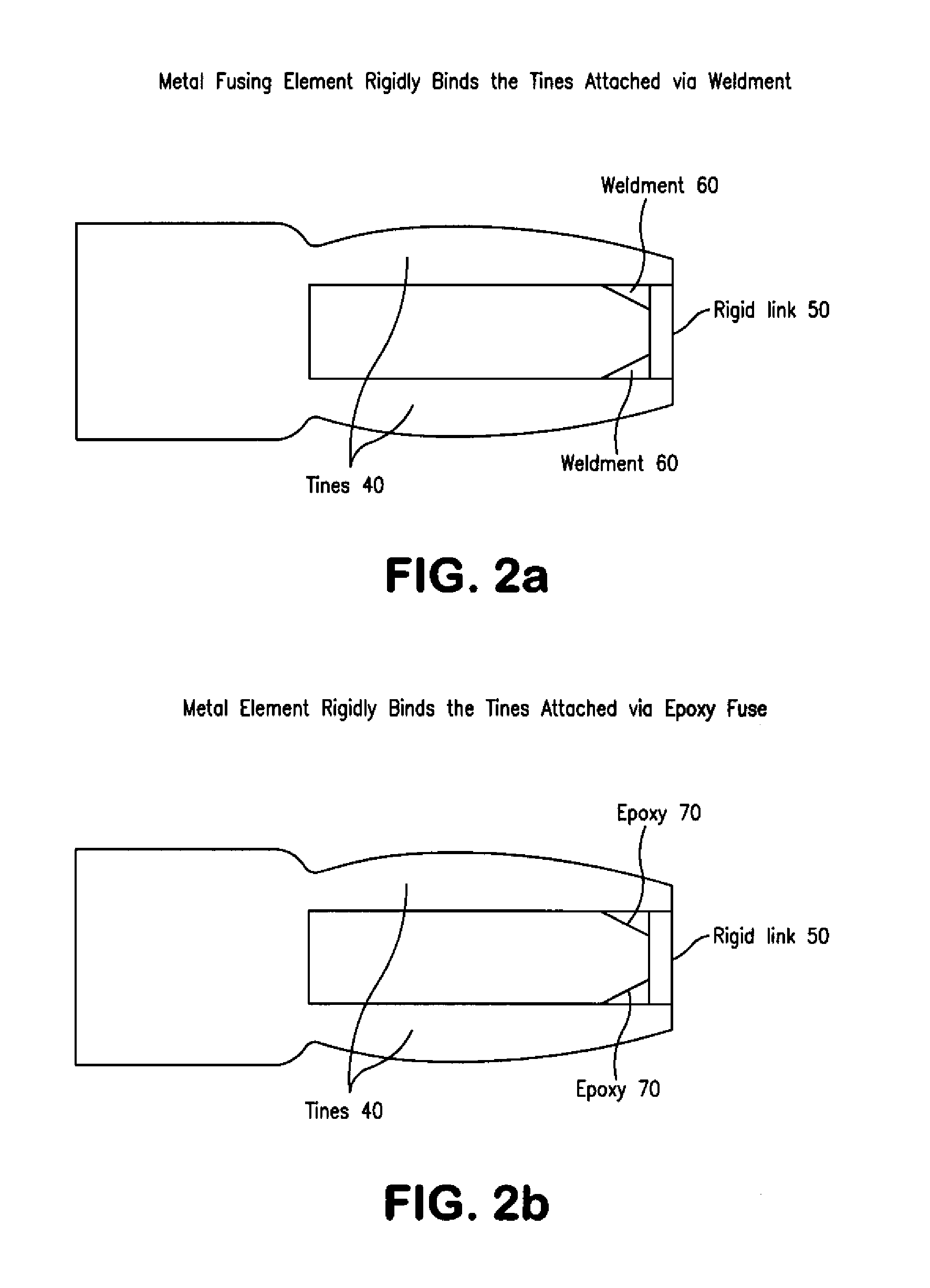Tuning Fork Oscillator Activated or Deactivated by a Predetermined Condition
a predetermined condition and oscillator technology, applied in the direction of vibration measurement in solids, material analysis through optical means, instruments, etc., can solve the problems of metal-loss corrosion of production, transfer, storage, and processing equipment, affecting the integrity of construction materials, and current corrosion sensing technologies, for example electrical resistance probes, fall far short of the performance level required to achieve the economic incentives described abov
- Summary
- Abstract
- Description
- Claims
- Application Information
AI Technical Summary
Benefits of technology
Problems solved by technology
Method used
Image
Examples
Embodiment Construction
[0024]This invention is directed to commercial tuning fork technology. As shown in FIG. 1, the tuning fork consists of a two tines [40] attached to a diaphragm [10]. The tines are comprised of a tip [20] and a base [30] region. Various shapes are possible for the tines including round, hemi-cylindrical, and a non-uniform shape for the tip and base region. The existing commercial applications include the on-line in-situ measurement of fluid level, density and / or viscosity of process streams in a wide range of industries. The instant invention involves the measurement of changes in the resonant parameters (in particular amplitude) of a tuning fork immersed in a process stream to detect material loss. The current commercially available devices use the resonance parameters of frequency, Q, and amplitude to determine the density and the viscosity of the medium. The underlying assumption in these devices for measuring fluid level, density and / or viscosity is that the mass of the oscillato...
PUM
 Login to View More
Login to View More Abstract
Description
Claims
Application Information
 Login to View More
Login to View More - R&D
- Intellectual Property
- Life Sciences
- Materials
- Tech Scout
- Unparalleled Data Quality
- Higher Quality Content
- 60% Fewer Hallucinations
Browse by: Latest US Patents, China's latest patents, Technical Efficacy Thesaurus, Application Domain, Technology Topic, Popular Technical Reports.
© 2025 PatSnap. All rights reserved.Legal|Privacy policy|Modern Slavery Act Transparency Statement|Sitemap|About US| Contact US: help@patsnap.com



